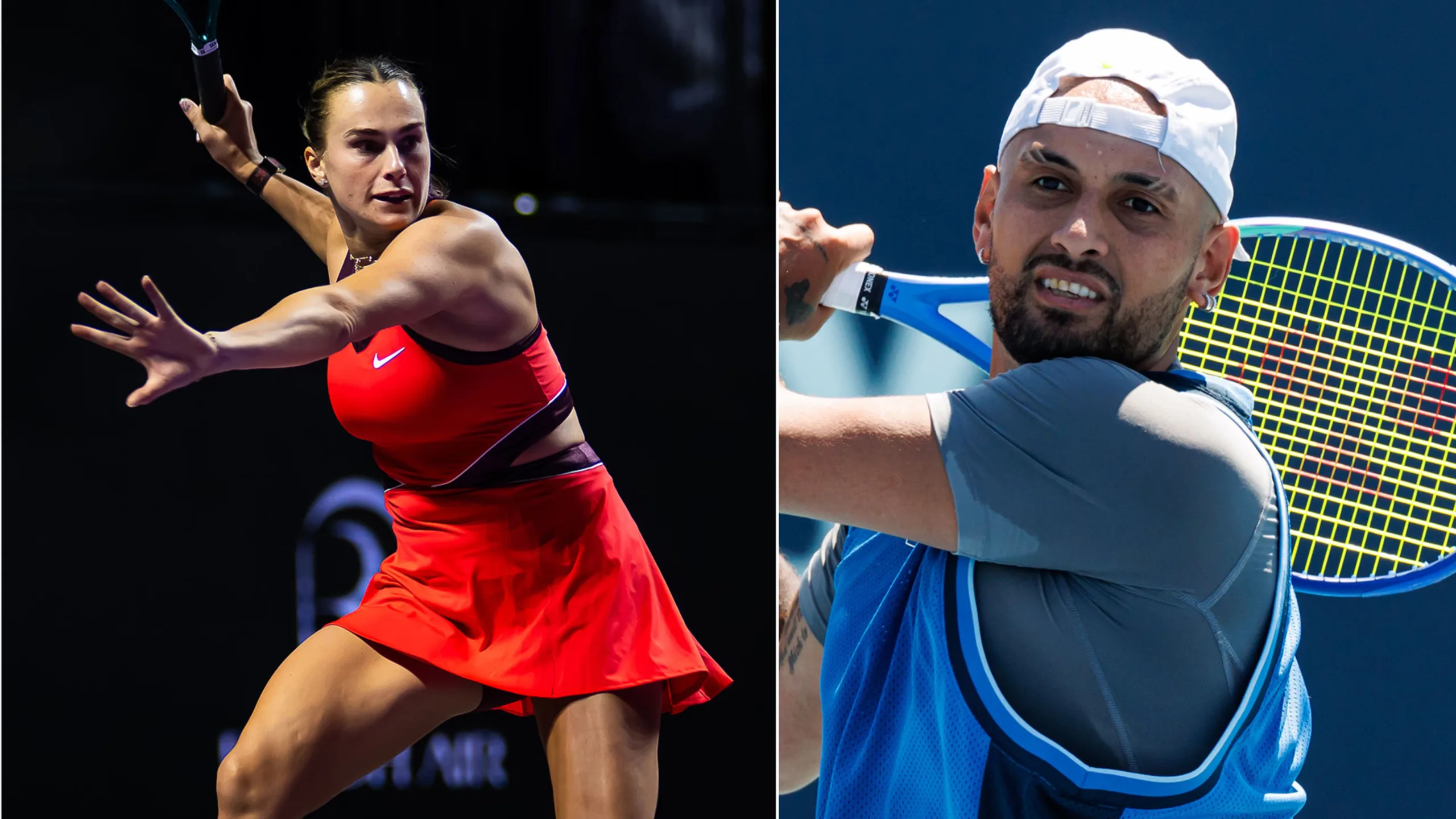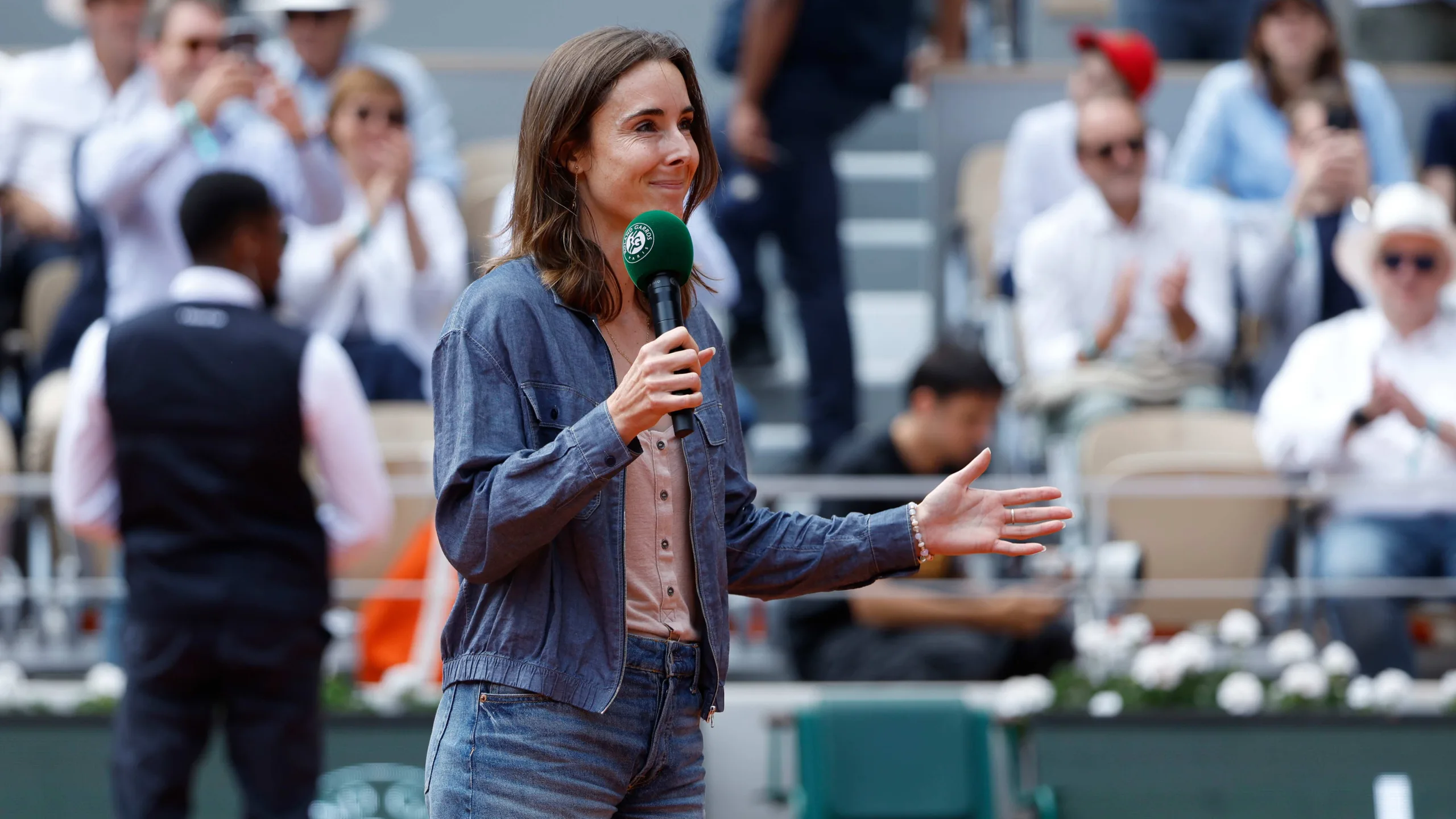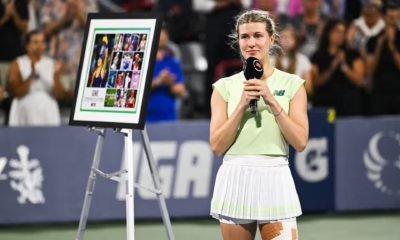Player News US Open WTA
Petra Kvitova Ends Playing Career at US Open, Leaves Lasting Legacy
Kvitova announced 2025 as her final season and closed her career with a first-round US Open loss…

Petra Kvitova confirmed that 2025 would be her final season and completed her professional career with a first-round loss at the US Open to Diane Parry, 6-1, 6-0. Now 35, Kvitova enters life as a wife and mother and signaled a readiness for a new chapter. “As [with] all phases in life, there comes a day that it is time for a new chapter, and that time for me has come now,” Kvitova wrote in a statement.
“I therefore wanted to share with you that 2025 is my last season on tour as a professional. . . . I am intending to finish my active playing career at the US Open in New York later this summer.”
Kvitova’s on- and off-court story defined her public image. A vivid early example came on July 6, 2014, the day after she won her second Wimbledon singles title, 6-3, 6-0 over Eugenie Bouchard in 55 minutes, when she set about cleaning the house she had just spent two weeks in. That blend of responsibility and humility deepened the admiration of fans and peers.
Her resilience was most stark after the December 20, 2016, attack that severely damaged her left hand. “I am shaken, but fortunate to be alive, Kvitova wrote on Facebook. “The injury is severe and I will need to see specialists, but if you know anything about me, I am strong and I will fight this.” After four hours of surgery and an uncertain prognosis, a recovery campaign followed under the banner “Courage, Belief, Pojd!” She returned at Roland Garros in 2017: “The courage and belief, that’s what I probably had to have in this kind of situation,” Kvitova said. “The belief and the mind, the heart, it’s really important. So that’s what we try to show everyone. I hope that it will be kind of inspiration for other people, as well.”
Kvitova captured 12 tournaments after the attack, including five in 2018, and added prestigious titles in Miami and Berlin in 2023. Her career totals include 31 WTA Tour singles titles and a career-high ranking of number two. She compiled a 30-10 singles record in Fed Cup play while helping her homeland to six titles between 2011 and 2017.
Born March 8, 1990, and raised in Bilovec, her idol was Martina Navratilova. “She has a record there and killed in the finals,” Navratilova said earlier this year. “The lefty serve helps, because it spins away from the backhand even more on the grass. And she had massive groundstrokes. And she could volley, you know, take the short ball and move forward.” Kvitova’s breakthrough at Wimbledon came in 2011, when the eighth seed beat Victoria Azarenka and Maria Sharapova in the final two rounds to join Navratilova and Ann Jones as the only lefthanded women to win Wimbledon singles. The one major title she did not claim was the Australian Open; she fell in the 2019 final to Naomi Osaka, 7-6 (2), 5-7, 6-4. “That’s how the tennis is,” Kvitova said following that match. “It’s the final.”
Despite her special affinity for Wimbledon, the US Open remained the Grand Slam where she never reached the semifinals, though she once admitted, “I think I kind of formed a love for New York City.”
ATP Player News WTA
Sabalenka and Kyrgios to meet in Dubai ‘Battle of the Sexes’ exhibition
Sabalenka and Kyrgios will meet in Dubai on Dec. 28 for a ‘Battle of the Sexes’ exhibition. indoors.

Top-ranked Aryna Sabalenka and former Wimbledon finalist Nick Kyrgios are scheduled to face each other in a “Battle of the Sexes” exhibition set for Dec. 28 in Dubai. The match will be played indoors at the 17,000-seat Coca-Cola Arena, and both players posted logistical details on their social media channels after Sabalenka confirmed during the U.S. Open that discussions for the match were underway.
Before their head-to-head meeting in Dubai, both players will take part in an exhibition in New York on Dec. 8, though they will not play one another there. Sabalenka will face Naomi Osaka and Kyrgios will play Tommy Paul in that event.
Kyrgios has outlined specific conditions for the Dubai match, saying he would get only one serve and would be hitting toward a smaller side of the court. The Australian, who has barely played in recent years because of injuries, has predicted he will win easily.
“I cannot wait to get back out on court,” Kyrgios said in an Instagram story. “Honestly I’m feeling amazing. I never thought I would be back into this position, being able to travel the world, see my fans and play some amazing tennis.”
The exhibition borrows its name from the famous 1973 meeting between Billie Jean King and Bobby Riggs, a match King won in straight sets in the Houston Astrodome. Sabalenka enters the off-season as a four-time Grand Slam champion and one of the top attractions on the women’s tour, while Kyrgios returns to a spotlighted appearance after a period of limited competitive play.
Billie Jean King Cup Governing Bodies Player News
Alizé Cornet named captain of France’s Billie Jean King Cup team
Alize Cornet named France Billie Jean King Cup captain after retiring; will prepare Olympic team…

Alizé Cornet has been appointed captain of France’s Billie Jean King Cup team a few months after retiring from tennis a second time earlier this year. The French tennis federation announced the nomination on Sunday, saying Cornet stood out from other candidates because of her “investment in French tennis, her profile, her motivation and her availability.”
The 35-year-old replaces Julien Benneteau, who held the role since 2019. Cornet’s remit will extend beyond the Billie Jean King Cup squad and includes preparing the French Olympic team leading up to the Los Angeles Games in 2028, monitoring national team players during competitions and overseeing youth teams.
“I appreciate the trust the federation has placed in me, and I am determined to do everything I can to help our players reach their full potential,” Cornet said in a statement. “My goal is to build a strong team spirit, based on high standards, solidarity, and a passion for the French jersey.”
Cornet brings the experience of a 20-year professional career to the role. Touted as a young prodigy, she achieved a career-high ranking of No. 11 in 2009 and won six singles titles. Known as a solid baseline player with a strong backhand, she also held the women’s record for most consecutive Grand Slam tournaments played at 69, a streak that ran from the 2007 Australian Open to last year’s French Open.
The federation emphasized Cornet’s availability and motivation when confirming the appointment. Her new duties place her at the centre of France’s national-team planning as preparations begin toward future international events and the 2028 Olympic cycle.
Analytics & Stats Player News Tennis Coaching
Alcaraz’s off-hand: the hidden engine behind his forehand
Alcaraz’s extended off-hand increases shoulder coil, storing energy that fuels his explosive forehand

Watch almost any top-level player hit a forehand and you will notice the off-hand is not idle. During the takeback it helps position the racquet and rotate the upper body, creating structure and stored energy to release into the shot. For most players the hands separate during the takeback and the off-arm stays parallel to the net.
The current men’s No. 1 takes a different route. Where most players let go of the racquet’s throat when the off-arm is just about parallel to the net, he holds it until his left hand is even with his hitting shoulder. That retained contact changes how his stroke loads and unloads.
Keeping the off-hand on the racquet longer creates greater upper body tension. Mimic his turn and you can feel the stretch in the lats. The added shoulder rotation builds more stored energy that can be transferred into the swing. Yet the result is not a bigger, slower motion. He turns his shoulders more while maintaining a compact geometry: a bent hitting elbow and the racquet head level with the chest, similar to players who use a more modest shoulder turn.
That combination lets him generate faster swing speed without an exaggerated path. He uncoils with a relatively loose arm and so produces immense racquet head speed without relying on an extreme loop or oversized swing.
He is not a template everyone can copy. Few players can replicate his range of motion, upper body flexibility or world-class timing. Even so, approximating a deeper shoulder coil and delaying the separation of the off-hand can measurably increase the amount of energy available to a forehand. For players and coaches focused on adding speed and consistency, the lesson is clear: the off-hand is an active tool for storing rotation-based power, not merely a balancing aid.
-

 Analytics & StatsATPUS Open2 months ago
Analytics & StatsATPUS Open2 months agoSinner: Predictability Cost Me in US Open Final as Cahill Reveals Djokovic’s Counsel
-

 Analytics & StatsUS OpenWTA2 months ago
Analytics & StatsUS OpenWTA2 months agoAfter the US Open: Six WTA takeaways from the 2025 tournament
-

 Analytics & StatsFinalsWTA2 months ago
Analytics & StatsFinalsWTA2 months agoCan Iga Swiatek Overturn Aryna Sabalenka for 2025 Year-End No 1?













